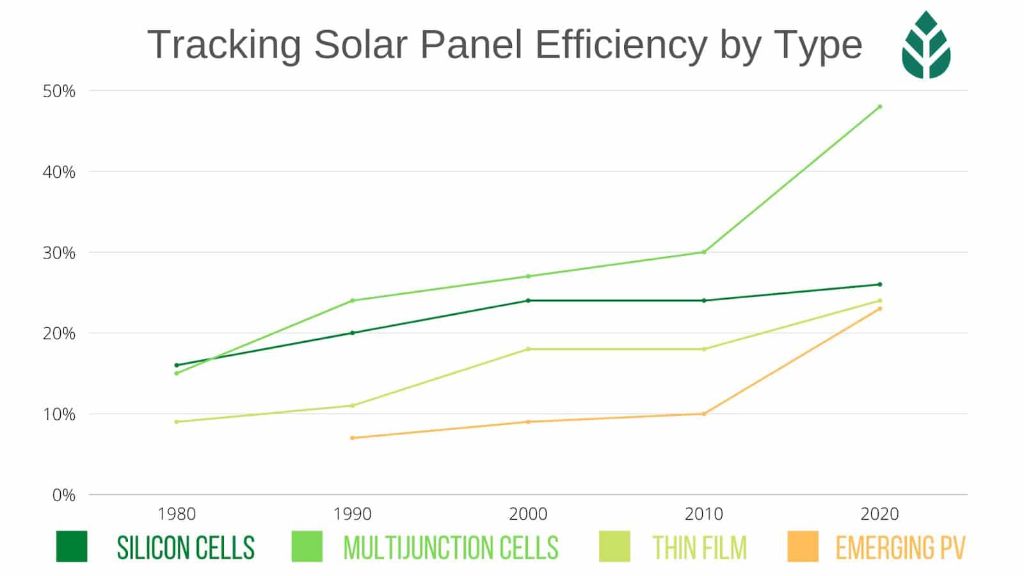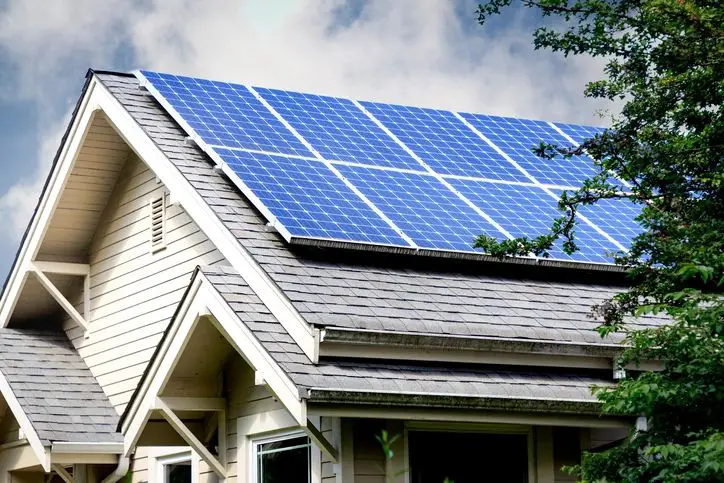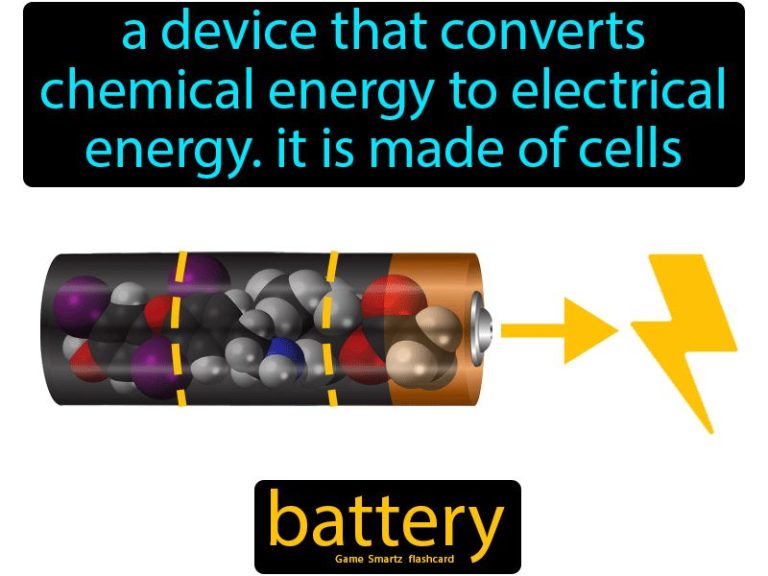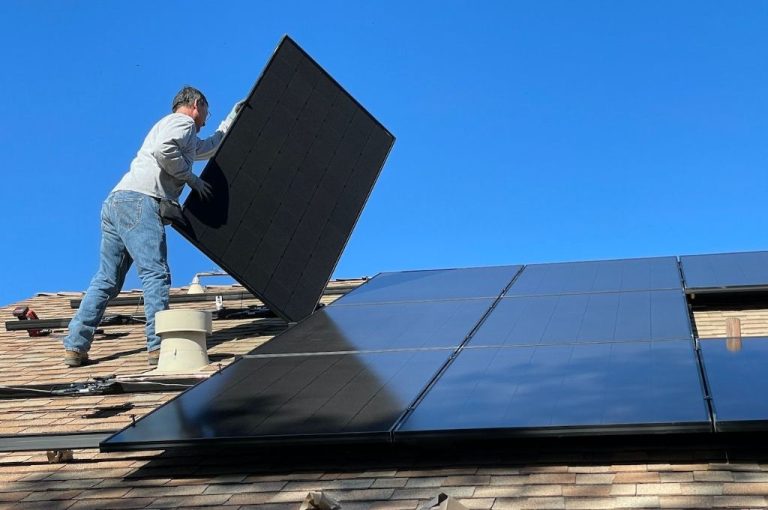Future Of Solar Panels Efficiency

Solar panels have come a long way in terms of efficiency since their invention in 1954. In the beginning, the first solar cells converted only about 6% of the sun’s energy into electricity. But thanks to ongoing research and development, most panels today have efficiencies of 15-20%. According to one source, “The major take-away from this quick skip through time is that the history of solar panel efficiency shows impressive advances at first, but more incremental in recent years.” (Understanding Solar Panel Efficiency)
Solar panel efficiency is a key metric because it determines how much electricity can be generated from a given surface area. Higher efficiency panels produce more power from the same space and can generate the same amount of electricity with a smaller system size. This helps reduce overall system costs. Continuing to push solar panel efficiencies higher through research and new technologies will further drive down costs and support wider adoption of solar power.
Current Solar Panel Efficiencies
The efficiency of a solar panel determines how much sunlight it can convert into electricity. There are three main types of solar panels on the market today with different typical efficiencies:
Monocrystalline solar panels are the most efficient, with average module efficiencies around 15-20%. They are made from a single crystalline silicon wafer and have a distinctive uniform black appearance. Monocrystalline panels produce up to 400 watts per square meter.
Polycrystalline solar panels are moderately efficient, with average efficiencies of around 13-16%. They are made from fragments of silicon crystals bonded together and have a speckled blue color appearance. Polycrystalline panels produce up to 350 watts per square meter.
Thin-film solar panels are the least efficient at around 7-13% efficiency. They are made by depositing layers of photosensitive materials on surfaces like glass or plastic. Thin-film panels are lightweight and flexible but produce less power – around 150 watts per square meter.
So in summary, monocrystalline panels are the most efficient while thin-film panels are the least efficient. Real world efficiencies are typically lower than lab test efficiencies due to factors like temperature effects.
Factors Limiting Panel Efficiency
There are several fundamental factors that limit the maximum theoretical efficiency of solar panels:
Material Limitations: Most solar panels use silicon as the primary material. Silicon has an inherent crystalline structure and bandgap that limits the fraction of the solar spectrum it can absorb and convert into electricity to around 30% (Source). Using different semiconductor materials with different bandgaps can increase absorption of the solar spectrum, but no single material can absorb the entire spectrum.
Spectrum Losses: The solar spectrum contains photons with energies both above and below the semiconductor bandgap. Photons with energy below the bandgap are not absorbed, while photons with excess energy above the bandgap lose that excess energy as heat (Source). This thermodynamic loss limits maximum efficiency.
Carnot Limit: Solar panels operate as heat engines, absorbing heat from sunlight and emitting heat to the surroundings. This is subject to the Carnot limit which caps the maximum possible efficiency based on the temperature difference between the solar radiation and the surrounding environment (Source). Real-world operating temperatures limit maximum efficiency to around 86% under concentrated sunlight.
Additional factors like resistance losses, shadowing, and reflection also reduce achievable solar panel efficiency below theoretical limits.
Approaches to Improve Efficiency
There are several promising approaches for improving the efficiency of solar panels, pushing beyond the limits of traditional silicon cells. One method is developing multi-junction cells that use multiple semiconductor layers to absorb different wavelengths of light. This can enable efficiencies over 40%, compared to around 20% for silicon cells (1).
Another approach is concentrating photovoltaics (CPV), which use lenses or mirrors to focus sunlight onto small high-efficiency solar cells. CPV systems can achieve efficiencies of over 40% in lab settings (2). However, they require direct sunlight and precise solar tracking.
Thermophotovoltaics (TPV) are an emerging technology that convert infrared radiation into electricity using a photonic crystal emitter and a PV cell. By tuning the emitter’s properties, TPV systems can potentially reach 50% efficiency by recapturing waste heat (3). While still in early development, TPV holds promise for turning low-grade heat into useful energy.
Other cutting-edge concepts like hot carrier cells, quantum dot arrays, and novel organic PV materials are also being researched to push solar efficiencies higher. But most of these new approaches face challenges with costs, scaling up production, and long-term reliability before widespread commercial adoption.
Sources:
(1) https://www.energy.gov/eere/solar/solar-photovoltaic-cell-basics
(2) https://www.nrel.gov/news/program/2021/concentrating-solar-spacecraft-power-could-reach-levels-greater-than-50-efficiency.html
(3) https://www.energy.gov/eere/solar/articles/thermophotovoltaics-tpvs-generate-electricity-heat
Promising Future Technologies
Emerging solar technologies, such as perovskites, quantum dots, and luminescent solar concentrators, are showing great promise for improving solar panel efficiency in the future. Perovskites have the potential to increase efficiency while lowering costs due to the high absorbance properties and flexibility of their crystal structure (https://en.tongwei.com.cn/news/63.html). Quantum dots utilize nanocrystals that enable tuning of light absorption and can be synthesized cheaply, making them an appealing option. Luminescent solar concentrators use luminescent materials to absorb sunlight and transmit it to the edges of panels, reducing the amount of photovoltaic material needed.
While these new technologies are still undergoing research and development, their unique properties make them strong contenders to replace or work alongside traditional silicon solar cells in the future. Several startups are working on developing and commercializing these innovations to bring more efficient and affordable solar power to the market. However, there are still challenges that need to be overcome related to Scaling up production, stability, and toxicity before emerging solar technologies can fully realize their potential. But the progress to date is promising for boosting solar panel performance beyond current limits.
Research Breakthroughs
There have been several recent breakthroughs in lab tests achieving ultra high solar cell efficiencies. In 2023, scientists at Helmholtz-Zentrum Berlin (HZB) set a new world record efficiency of 33.9% for a silicon-perovskite tandem solar cell [1]. This tandem cell combines silicon, the conventional material for solar cells, with perovskite. Perovskite is a newer, cheaper material that has enabled cells with efficiencies over 25%. Combining silicon and perovskite allows cells to absorb a broader range of wavelengths for higher efficiency.
Earlier in 2023, researchers at Michigan State University achieved a record 19.3% efficiency for an organic solar cell, using a new polymer donor material [2]. Organic photovoltaics are lightweight, flexible solar cells made from carbon-based polymers and plastics. The new polymer material enabled more efficient light absorption and charge generation.
Challenges for Commercialization
While research teams regularly achieve solar cell efficiency breakthroughs in the lab, translating these advances into mass-produced commercial panels brings many challenges.[1] One major obstacle is that lab prototypes often rely on expensive materials and manufacturing techniques not feasible at scale. For example, multi-junction cells can achieve over 45% efficiency by combining multiple semiconductor layers, but the complexity makes manufacturing costs prohibitively high.
Manufacturers also face technical hurdles ramping up production of new high-efficiency designs. The highest efficiency perovskite and organic cells use very thin layers of material that can be tricky to manufacture reliably across large surface areas. Problems with thermal and air stability and moisture ingress during fabrication and operation also need to be resolved.[2]
Bringing costs down is another central challenge, as every increase in efficiency often requires more advanced materials and processes. Approaches also must demonstrate good longevity and durability in real-world operating conditions. Overall, bridging the gap between lab-scale innovations and commercially viable products remains an ongoing process.
[1] https://www.energy.gov/eere/solar/solar-manufacturing
[2] https://www.dataforma.com/challenges-facing-the-solar-industry-right-now/
Startup Companies
A number of promising solar panel startups are working to commercialize new technologies and bring innovative products to market. For example, SoloPower has developed flexible thin-film solar panels using CIGS technology that can be installed on curved surfaces, making them ideal for building facades and curved rooftops (Art Solar Panels, Practical and Beautiful). Oxford PV is focused on developing perovskite solar cells and recently achieved a record 28% efficiency for a perovskite-silicon tandem solar cell (The 3 Most Promising Solar Panel Startups – RanKingz).
Another promising startup is JinkoSolar, which went public in 2010 and is now one of the largest solar panel suppliers globally. JinkoSolar has heavily invested in R&D and manufacturing innovations to drive down costs and improve efficiency. The company set a world record in 2020 for the efficiency of its large-area N-type monocrystalline silicon solar cells, reaching 24.79% (Unveiling the Potential of Polycrystalline Solar Panel Startups in the Green Energy Revolution).
Market Projections
Experts predict continued steady improvements in solar panel efficiency through 2030 and beyond. According to projections from the National Renewable Energy Laboratory (NREL), the average efficiency of commercial silicon solar panels could reach 21% by 2030, up from around 17% today. Thin-film technologies like Cadmium Telluride (CdTe) and Copper Indium Gallium Selenide (CIGS) may achieve efficiencies over 22% by 2030 [1].
Even more dramatic leaps in efficiency are possible by 2050, with projections over 30% for advanced multi-junction cells. Emerging technologies like perovskites and organic PV could enable flexible, lightweight solar materials with over 20% efficiency. If these ambitious efficiency targets are met, it would slash solar electricity costs and greatly accelerate solar energy adoption worldwide [2].
With solar already the lowest cost source of new electricity in most markets, even modest efficiency gains of a few percentage points can substantially improve the competitiveness of solar vs conventional power. Continued research, development and commercialization of more efficient solar technologies will be critical to unlocking the full potential of solar PV.
Conclusions
As we’ve seen, solar panel efficiency has steadily improved over the past several decades thanks to intensive research and innovation. While commercial panels were only 4-5% efficient in the 1970s, today’s panels now achieve over 20% efficiency. Key innovations like multi-junction cells, quantum dot technology and perovskites have enabled these major leaps in efficiency.
Looking ahead, emerging technologies like organometal halide perovskites and quantum dots seem poised to push efficiencies upwards of 30% and beyond in the coming years. Though commercialization challenges remain, the field of photovoltaics continues to rapidly advance through both incremental improvements and game-changing breakthroughs.
In summary, solar panel efficiency has already come a long way but still has significant room for improvement. With sustained research and investment, solar energy’s share of global electricity generation could dramatically increase thanks to more efficient and cost-effective panels. The future is bright for this vital renewable energy technology.






